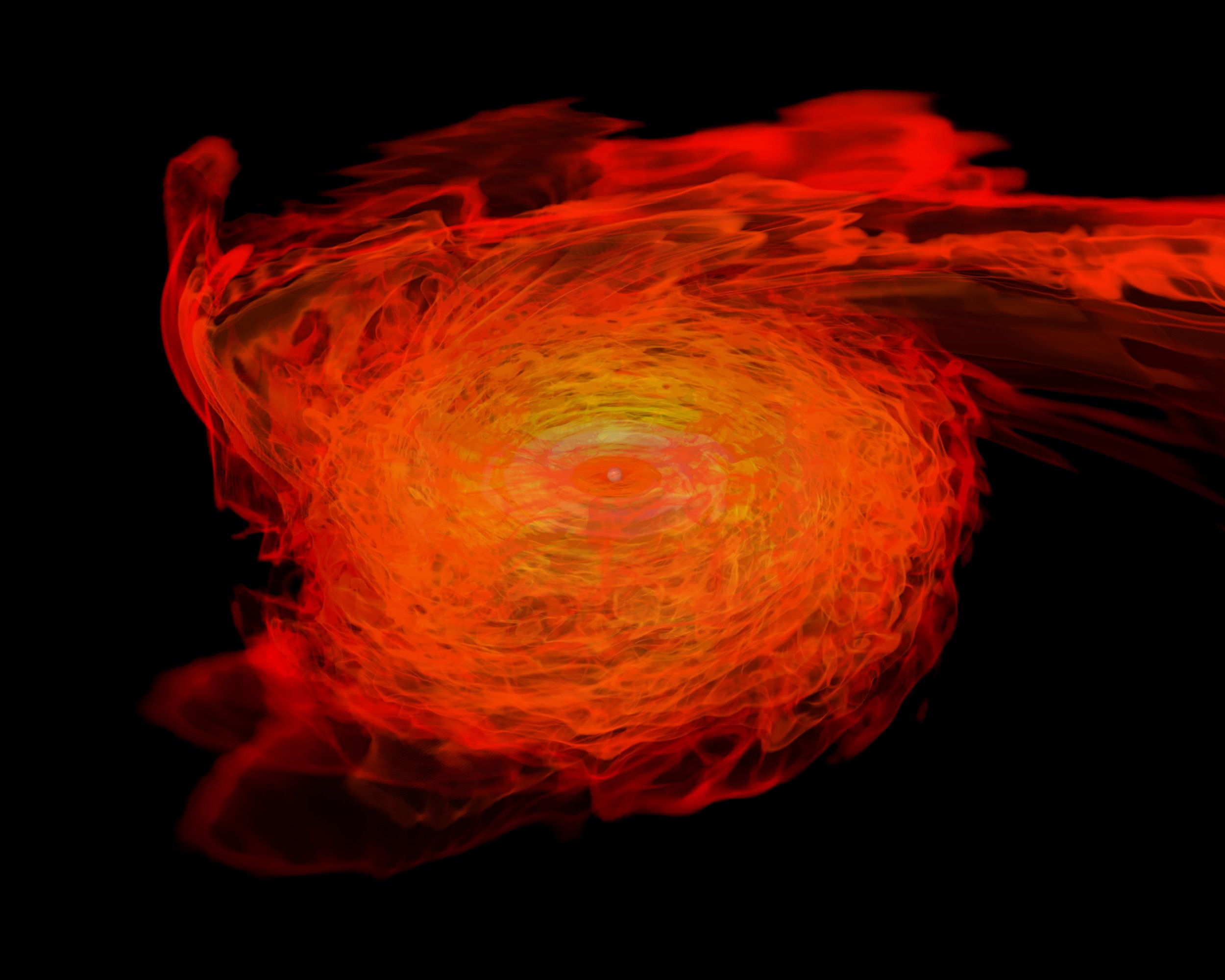
Update | Last August, astronomers detected the massive collision of two neutron stars. This neutron star merger sent gravitational waves surging through space. It also unleashed a gamma ray burst—the world's most powerful laser.
Normally gamma ray bursts glow brightly for a short time, then fizzle out and lose energy. New electromagnetic observations from NASA's Chandra X-ray observatory show the burst brightening, baffling astronomers.
"Usually when we see a short gamma-ray burst, the jet emission generated gets bright for a short time as it smashes into the surrounding medium—then fades as the system stops injecting energy into the outflow," said McGill University astrophysicist Daryl Haggard in a statement. "This one is different; it's definitely not a simple, plain-Jane narrow jet."
Haggard's research group led the new study published in The Astrophysical Journal Letters. McGill postdoctoral researcher John Ruan led the paper itself.
An exploding cocoon
A more complex explanation is needed for the bizarre brightening, the authors wrote. They propose that a "cocoon"-shaped explosion might do the job. In this model, a jet from the collision shock-heats the surrounding gas and debris, creating a boiling cocoon of matter.
The new X-ray observations support recent discoveries from radio emissions. Last month, another team of researchers reported the strengthening of radio emissions from the neutron star merger. They produced a digital reconstruction, seen in the video below, of a similar "cocoon" model.
The jet emission is choked before breaking into a cocoon of radio waves and other emissions.
"The gradual brightening of the radio signal indicates we are seeing a wide-angle outflow of material, traveling at speeds comparable to the speed of light, from the neutron star merger," study author Kunal Mooley explained at the time.
"Unlike anything we've seen before"
This is just the latest discovery from an event which has perplexed scientists for months. The gravitational waves created by the massive collision confirmed elements of Albert Einstein's general theory of relativity. Scientists now believe the merger could explain the origins of metals like gold and platinum.
"This neutron-star merger is unlike anything we've seen before," said Melania Nynka, a McGill postdoctoral researcher and study co-author, in the statement. "For astrophysicists, it's a gift that seems to keep on giving."
This article has been corrected to clarify the types of observations analysed by researchers.
Uncommon Knowledge
Newsweek is committed to challenging conventional wisdom and finding connections in the search for common ground.
Newsweek is committed to challenging conventional wisdom and finding connections in the search for common ground.
About the writer
Katherine Hignett is a reporter based in London. She currently covers current affairs, health and science. Prior to joining Newsweek ... Read more
To read how Newsweek uses AI as a newsroom tool, Click here.








